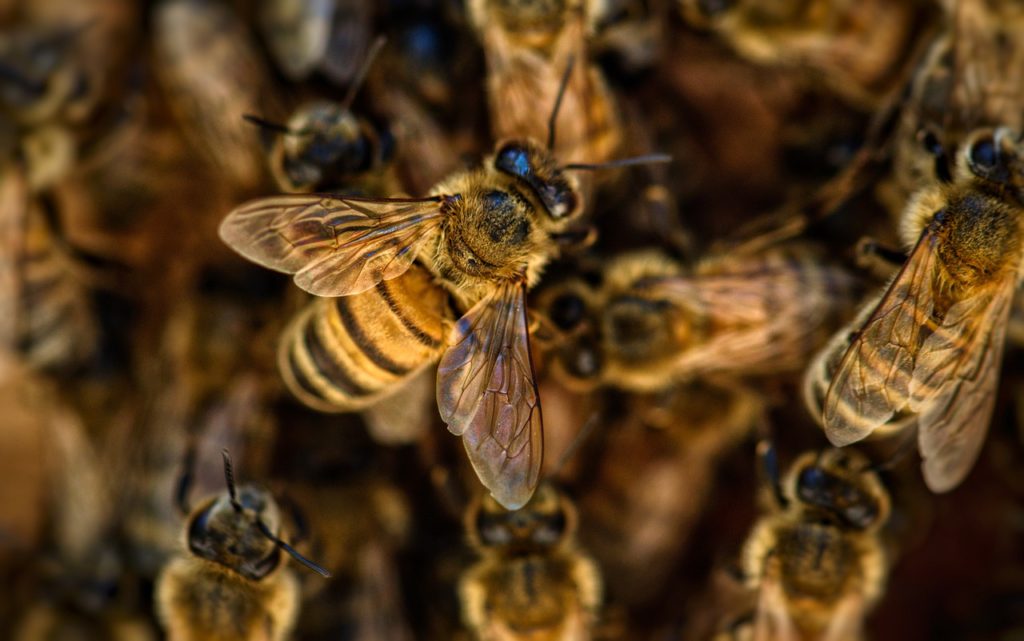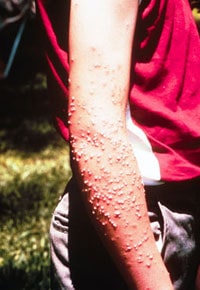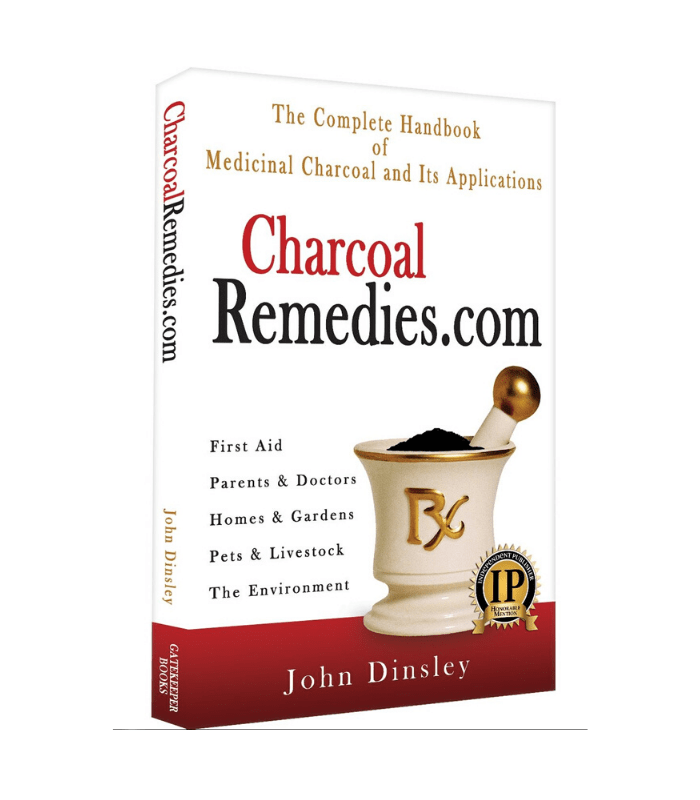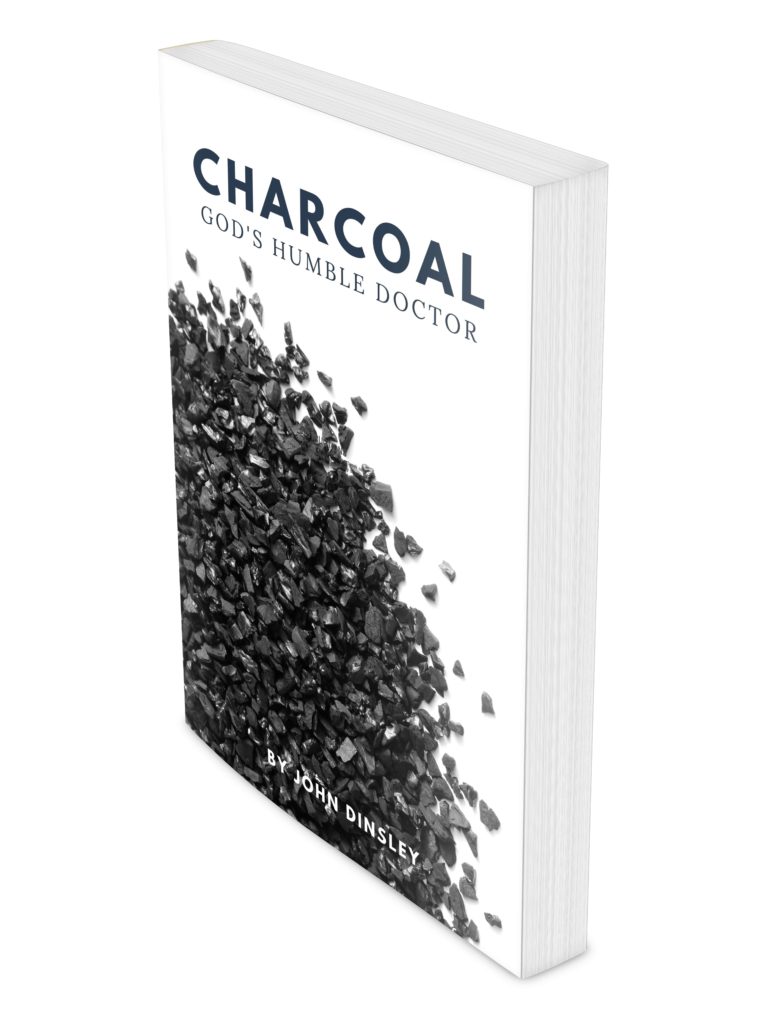Drs. Thrash, MD

Table of Contents
Drs. Calvin & Agatha Thrash
Dr Calvin is a board-certified Internist specializing in heart disease and Dr. Agatha is a board-certified Pathologist and Medical Examiner for the state of Georgia. They are the founders of Uchee Pines Institute (1970), a non-profit natural health education institution. There, many simple remedies are used in the practice of health recovery such as hydrotherapy, massage, diet, and of course, charcoal. They authored the little work Rx Charcoal Startling New Facts About The world’s Most powerful Clinical Adsorbent.
Here are just a few personal experiences shared in their book:
La Tourista aka Traveler’s Diarrhea
“A prominent Columbus, Georgia, executive was traveling to Mexico when he developed a bad case of tourista [the common euphemism for diarrhea amongst tourists. It is generally caused from E. coli bacterium in unsanitary food and water]. He was having diarrhea two to three times an hour on the first day of his disease, with much discomfort in the abdomen. A doctor treated him with the usual antibiotics and Lomotil. A week later, when he returned home, he consulted his own doctor because the condition had settled down to three to five diarrhea stools a day, with continuing discomfort. He got a change of medication but no change of symptoms. After twelve days of the disease and eight different medicines, he called us, desperately seeking suggestions for a natural remedy. We began a routine of one tablespoon of charcoal in a glass of water, followed by a full glass of water every time he had a loose stool. Within two days he was entirely well… and sold on charcoal. Now he never travels without charcoal, and always takes a tablespoon with the first hint of a symptom.”
Bee Sting (Anaphylaxis)

“Mrs. T. had become extremely allergic to bee stings. With her last sting, she had nausea, weakness, faintness, and some wheezing, which had necessitated treatment at an emergency room. Her physician had warned her that the next attack could be fatal, and urged her to undergo a series of desensitization shots. Unfortunately, before she could do so, she got another sting on her hand. Right away, the lady was pale, sweaty, weak, had a headache and nausea, and severe pain in her hand. She was beginning to wheeze.
We first rubbed the sting with a charcoal tablet wet with water as the very quickest way to apply charcoal, and immediately mixed some activated charcoal and water, and more completely covered the sting. Within two or three minutes of the charcoal application, she began to relax and feel better. A larger poultice was prepared to replace the emergency one, and it was changed at ten minute intervals for an hour. We gave her a tablespoon of charcoal by mouth in a glass of water. Then an interesting thing happened.
The patient felt perfectly well and took the poultice off believing herself to be entirely finished with the reaction. Within ten minutes, she was weak, sweaty, faint, and beginning to wheeze. The poultice was immediately re-applied, again with clearing of symptoms. After wearing the poultice all night, she was well. Although this lady usually experienced massive swelling after bee stings, she had no trace of swelling.”
As an ounce of prevention for the unforeseen, those who know they are always at risk from severe reactions to insect bites should always have charcoal with them. It’s too late to go buy a fire extinguisher when your house is burning. Those who know also tell us that most people who die in fires had no emergency plans. Charcoal will be a part of any well-thought out emergency preparedness, whether one lives in the country or the city.
Snake Bites

The Doctors Thrash have not had firsthand experience with treating a poisonous snakebite with charcoal. As such they are hesitant to suggest using charcoal exclusively in treating snakebite. But, judging from the personal experience of others they feel it should certainly be considered as a first aid treatment. They include this case they monitored over the phone:
“Our first case was reported to us by telephone. A couple living in a remote area of Arkansas, sixty miles down a winding road from the nearest hospital, called in great distress to report that their one-and-a-half-year old son had been bitten on the chest by a copperhead moccasin. This snake may cause death in a small child. The fang marks were surrounded by some swelling, and the child was in great pain.
We instructed the couple to get to the emergency room as quickly as possible. We also told them to apply charcoal poultices one after the other, every ten minutes until they got there. We were greatly relieved when they called several hours later to report that the child was doing quite well.
In fact, by the time they had gotten to the hospital, the child was asleep, the swelling had gone down and the pain had obviously stopped. The physician administered the antivenin to be on the safe side, but told them that he didn’t really believe it was necessary. The child had no ill effects.”
Cellulitis
“We have seen pain in severe, throbbing and feverish cellulitis subside in a matter of five minutes after the application of a charcoal poultice. The reaction is unbelievable unless actually observed.”
Chronic Relapsing Pancreatitis
“A twenty-six-year old woman came to the conditioning center with chronic relapsing pancreatitis, planning to stay for two or three months. She had had several abdominal operations in the past three years, and had finally been diagnosed as having chronic pancreatitis. Because of the severe unremitting pain and debility, her physicians were considering total removal of her pancreas.
Hoping to find some relief short of this drastic procedure, her husband had had his job transferred to our area so that she could be treated at our institute. They “knew” treatment would take several months. The patient was on potent medications for pain and nausea. Despite these, she was having continuous pain, nausea and vomiting. We asked if she were willing to stop her medications, which we felt were aggravating her condition. She reluctantly agreed.
She was given fomentations to the abdomen, charcoal by mouth, and large abdominal poultices at night. Because of the severity of her symptoms, her lifestyle counselor stayed in her room continually for the first forty-eight hours. The following day, the nausea was better, and she could retain liquids. She was wheeled out into the sun for a few minutes several times a day. Day by day her pain declined, and her appetite improved. In two weeks she was taking long walks, and by three weeks was walking five to six miles a day. After four weeks, she was completely symptom-free, and they returned to their home, praising the Lord.”
Chronic Intestinal Pseudo-obstruction
“Several years ago, a middle-aged lady came to our conditioning center ‘as a last resort’. She had had abdominal surgery at least twelve times in the previous five years, and was having to be admitted to the hospital every two or three weeks for gastric intubation and intravenous fluids. She was rapidly becoming debilitated. We put her on large amounts of activated charcoal by mouth, and placed fomentations to the abdomen several times a day. On the third day, she began to get abdominal distention and nausea. She was given a large dose of charcoal by mouth and a fomentation was applied, which was afterward replaced by a large charcoal poultice to the abdomen.
The following morning, the distention was gone, and we rejoiced that she was hungry. The treatments continued, and she was given a regular vegetarian diet. She never had another attack! She continues to use charcoal daily.”
Neonatal Jaundice
Doctor Agatha Thrash tells the following case of neonatal jaundice in a four-day old breast-fed baby.
“The father took the baby to our laboratory to be tested for its total bilirubin levels. The levels continued to climb over the next twenty-four hours and a consulting physician agreed with our suspicion of an ABO blood incompatibility. When the bilirubin rose to 18 mg% the consultant prepared to give an exchange transfusion of blood.
The same hour the mother began administering as much charcoal as she could get the baby to accept. With the baby undressed in her lap, she sat in the sunlight giving over an hour of exposure to both front and back (babies can tolerate more sunlight before getting a sunburn than can adults).
At the next six-hour bilirubin check, the level was down to 16.5%, and we knew we had avoided the hazardous exchange transfusion. Continuing with this treatment the bilirubin began to clear and was down to 4 mg% by the tenth day.”
In one astounding study the need for exchange transfusions in babies with erythroblastosis fetalis was cut by more than 90% with the use of charcoal. Erythroblastosis fetalis is a severe anemia that develops in an unborn infant because the mother produces antibodies that attack the fetus’ red blood cells. The antibodies are usually caused by Rh incompatibility between the mother’s blood type and that of the fetus (that is, the mother and baby have different blood types).
These babies can be at extreme risk after birth and, depending on the severity, a blood transfusion may be performed. In one study done at Fort Benning, Georgia, activated charcoal, suspended in water, was given every two hours. The treatment was continued for 120 hours in normal newborns and 168 hours in premature infants, or until bilirubin levels fell. Charcoal should be begun at four hours of age to produce the maximum reduction in elevated bilirubin levels.
Liver and Kidney Failure
Patients with liver and kidney failure can be treated sometimes even in the home with large compresses of charcoal placed over the back or over the abdomen. Charcoal can also be given by mouth in an attempt to prevent toxins from building up in the blood.
We have applied charcoal compresses to the back in kidney failure and observed the strong odor of urine on the compress the following morning after eight hours over night. charcoal enemas may also be given.
A 44 year old nurse developed widespread metastases from a cancer of the colon. Her ureters became blocked partially by the cancer and her urinary wastes began to rise in her blood. Each week her blood urea nitrogen (BUN) was about 5 milligrams higher than the week before. When the level reached 130, we began charcoal compresses each night and charcoal by mouth (1 tablespoon every 4 hours) during the day. The next week her BUN was down 5 mg. and continued to fall about 5 mg. per week until her death from cancer
During her last few weeks the nausea and abdominal discomfort she had experienced because of the extremely high BUN was much relieved and finally stopped when her BUN fell below 100mg.”
X-ray Burn Odor
“We had a patient who had a large deep ulcer (12 inches in diameter) due to x-ray bum on the back from an overdose of x-ray used for treating a skin cancer. The ulcer became infected and foul smelling. His entire house smelled of the ulcer, despite the most fastidious care. We started dressing the ulcer by sprinkling dry charcoal from a salt shaker on all the moist areas before applying gauze. Instantly odor vanished from the ulcer and gradually left the house. Although the patient eventually succumbed to the radiation sickness, he and his whole family were grateful for the charcoal.”
Charcoal cloth has been used in the management of discharging, infected, and malodorous wounds. In varicose leg ulcer and in infected surgical wounds, a single layer of charcoal cloth covered with a porous fabric sleeve dressing gave a noticeable reduction in wound odor in 95% of 39 patients. Wound cleansing was also noted in 80%. There were no adverse reactions to the material. The dressings did not stick to the wounds and could be removed without difficulty. Charcoal cloth also adsorbs bacteria.
Poison Ivy

A 38 year old sergeant was given a medical discharge from the Army because of an intense sensitivity to poison ivy. His sensitivity was so severe that one particular bout with the problem had resulted in a 5-week stay at Ft. Benning’s Martin Army Hospital complete with IV fluids, cortisone and a struggle just getting back to normal.
His wife called us early one morning asking us if we would see her husband. He had taken a walk in the country the day before and now his hands, feet , face and other areas were swollen tight. His eyelids were swollen shut and fingers were so stiff he could not bend them. We were reluctant to treat him as they insisted – without hospitalization and with simpler remedies than cortisone (which gave him wildly distressing thoughts). When we saw him he was feeling faint and nauseated. We showed his wife how to make charcoal compresses and instructed her on how to mix charcoal for oral administration. With these treatments he gradually improved during the day and could open his eyes by the next morning and close his fingers enough to grasp a steering wheel. After five days he was entirely well. We were all impressed!”
Ant Bites
Aware of the dire results of some insect bites, Dr. Agatha Thrash takes no chances and makes sure that charcoal is never far away. She shared this personal experience:

“My little grandchild accidentally sat down on a hill of fire ants. Instantly hundreds of ants began biting her. She screamed hysterically from the intense pain. We grabbed her, stripped off her clothing, and ran for a bathtub. As it filled with water, I added charcoal. After being submerged in that charcoal bath for less than two minutes, she stopped crying. The charcoal neutralized the poison, and her pain was gone. Charcoal has amazing healing properties. In fact, if I were stranded on a desert island, and could take only one thing along to protect me from disease, infection, and injury, I would choose charcoal.”

Now that is prevention in action. So for those of you who know you have severe sensitivities to insects or plants, it would be prudent to carry some charcoal with you on all your outdoor ventures. For those of you who are less sensitive, be sure to take some charcoal with you so you are prepared to help others, if need be. One never knows what might be lurking on a limb or under a leaf.

John Dinsley
Born in British Columbia, Canada, John Dinsley has lived, and worked from South America to the North Pole, from Nova Scotia to Nepal. He is trained as a lifestyle counselor, teaches public health programs, home remedies workshops, and has operated a family care home. He and his wife Kimberly are the owners of Charcoal House LLC. They often travel together across the U.S. and internationally to conduct charcoal workshops. He is a carpenter by trade, has managed an organic market garden business, and volunteered in overseas development work. When he is not building, teaching or gardening, he enjoys writing.



